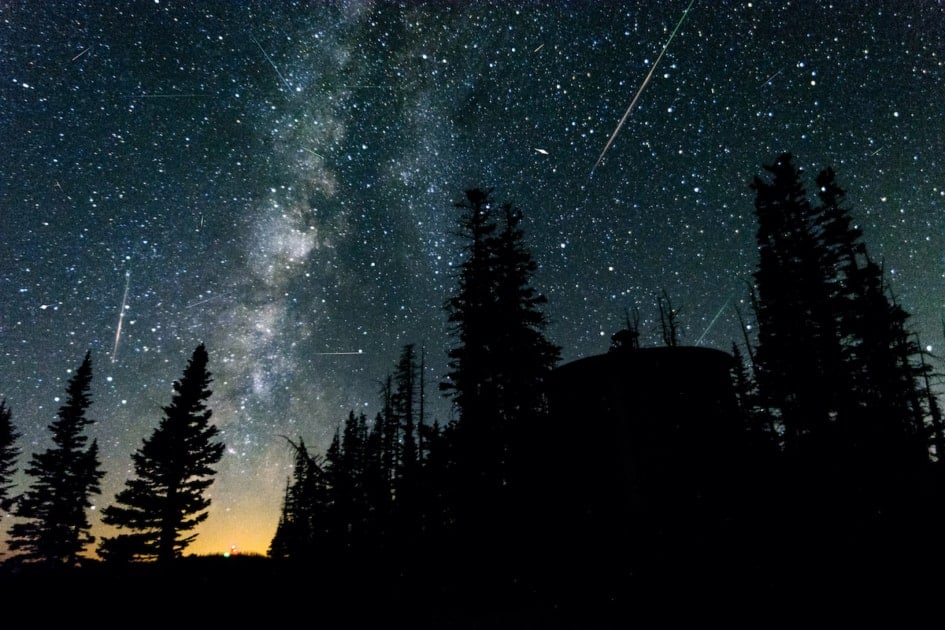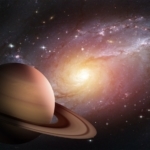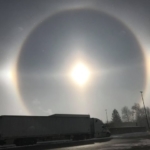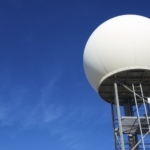Where To Look For The Great Geminid Meteor Shower 2025
Bundle up and head outside to watch the December Geminids, considered the best of the annual meteor displays. Learn more about this active meteor shower coming to a backyard sky near you!

If you love “shooting stars,” then be on the lookout for the Geminid Meteor Shower 2025—a pre-Christmas celestial fireworks display that peaks in mid-December. Many astronomers consider this annual meteor shower to be the best of the year—surpassing the famous Perseids of August. Depending on the darkness of your location, it may be possible to see as many as 60 to 120 “shooting stars” per hour during the night. Here’s everything you need to know. Psst … One of the great things about the Geminids is that—unlike most meteor showers—they are active in the evening (not only after midnight).
What Are The Geminids?
The Geminids are shooting stars caused by fragments of an asteroid (3200 Phaethon) with a debris trail that orbits around the Sun. Every December, the Earth runs into this dusty debris trail, causing “fireworks.”
The radiant (the spot in the sky where the meteors will appear to emanate) lies just below and to the right of the bright star Castor in the constellation Gemini (hence the name “Geminids”).
Details For The Geminid Meteor Shower 2025
One annual meteor shower that has become increasingly visible in the twenty-first century is the Geminid Meteor Shower. Every December 13 or 14, scan the sky around the constellation Gemini between 2 a.m. and 5 a.m. to see the peak of this unusual meteor shower.

The Geminids are not cometary in origin—they actually come from an asteroid called 3200 Phaethon, a rocky and icy body circling the Sun. As it regularly flies close to Earth, 3200 Phaethon leaves bits of rock and ice behind. Every December, Earth flies through these asteroid parts and stargazers are treated to a solid meteor shower.
Bundle Up!
But keep this in mind: at this time of year, meteor watching can be a long, cold business. You wait and you wait for meteors to appear. When they don’t appear right away, and if you’re cold and uncomfortable, you’re not going to be looking for meteors for very long!
The late Henry Neely, who for many years served as a lecturer at New York’s Hayden Planetarium, once had this to say about watching for the Geminids: “Take the advice of a man whose teeth have chattered on many a winter’s night: Wrap up much more warmly than you think is necessary!”
Hot cocoa or coffee can take the edge off the chill, as well as provide a slight stimulus. It’s even better if you can observe with friends. That way, you can keep each other awake, as well as cover more sky. Give your eyes time to dark-adapt before starting.
Good luck, stay warm, and here’s hoping you catch sight of lots of shooting stars.
Join The Discussion
Have you ever seen a shooting star?
Are you looking forward to the Geminid Meteor Shower 2025?

Joe Rao
Joe Rao is an esteemed astronomer who writes for Space.com, Sky & Telescope, and Natural History Magazine. Mr. Rao is a regular contributor to the Farmers' Almanacand serves as an associate lecturer for the Hayden Planetarium in New York City.






Where can you see him at what location in the United States?
I live in San Antonio. The forecast shows partly cloudy next weekend. Any idea the closest area to San Antonio, TX, to watch the Geminids without cloud obstruction?
Thank you